By: Jenny Andjelkovic, FARE National Ambassador & Food Allergy Connecticut Co-chair
If you don’t have food allergies, chances are you will know someone who does. With food allergies, one bite of the wrong thing can make you sick, land you in the hospital or worse.
The surging prevalence of food allergies has reached epidemic proportions, affecting 240 to 250 million people worldwide. In the US alone:
- More than 32 million people live with food allergies which affect an estimated 8% of children, or about 1 in every 13. About 1 in 10 adults have food allergies, with 45% reporting onset of at least 1 allergy after age 17.
- Every 3 minutes a food allergy sends someone to the ER. 42%+ of children with food allergies have experienced a severe reaction, and over 50% of adults.
- Families spend an estimated $24.8 billion annually ($4,184/year per food-allergic child) caring for food allergic family members. $20.5 billion of the estimated total is the impact on caregiver productivity, and the out-of-pocket costs of allergen-free foods, epinephrine auto-injectors, special childcare, and other expenses. Another $4.3 billion is spent on direct medical care.
These staggering statistics prompt the questions, “What on earth is happening to the human race to ignite our immune systems to attack the food we consume with an all-out, potentially lethal immune response? And, can it be stopped?
“Once you choose hope, anything’s possible.” —Christopher Reeve
I believe answers and solutions will be found. Here’s what I see from my vantage point as a member of FARE’s Board of National Ambassadors.
People affected by food allergies should take heart…Why?
…because thousands of researchers are relentlessly working to determine why food allergy prevalence is on the rise and how to cure the condition.
- How big is big? Researchers painstakingly built the business case for increased government and private industry investment in food allergy treatments by quantifying food allergy prevalence, its economic impact and its psychosocial impact. Commensurately, we are seeing government funding and private investment for research on the upswing.
- Increased investment in research and research collaboration are accelerating the search for answers. Non-profit organizations like FARE, The Food Allergy Fund, The Allergy and Asthma Foundation of America, in addition to government agencies such as the FDA, the NIH and CDC are collaborating to strategically invest in research — allocating millions of dollars diverse lines of scientific inquiry. They are sharing and evaluating data to identify promising avenues from the research for further investigation.
- More data on the condition is systematically being collected from the population directly affected by food allergy. The FARE Patient Registry is the largest of its kind, with more than 11,000 participants contributing vital, food allergy-related medical information that feeds data to collaborating researchers at 50 food allergy Centers of Distinction in the FARE Clinical Network and other institutions across the nation. The Registry will help us figure out how fast this epidemic is growing, where it is concentrated, who exactly is being affected, and what allergens are the most common. Over time, the data in the Registry will lead to deeper understanding of the condition’s root causes. You can make a difference by joining this important Patient Registry!
- Data and results sharing is enabling researchers to look at this condition without a cure from new and different angles. Academic and medical institutions of distinction and multi-disciplinary experts around the globe are bringing important findings from studies to the table to look outside the box for new answers to the food allergy conundrum.
…because life with food allergies keeps getting easier and safer through advances in science and technology, and through advocacy successes.
Science
- Advances have been made in diagnosing food allergy with greater accuracy, providing more actionable insights into the short and long-term prognosis for the patient. Component allergen testing now helps allergists determine which patients are at higher risk for more severe reactions vs. milder symptoms.
- Different immunotherapy options are more broadly accessible than ever before. If your loved one is anaphylactic to an allergen, immunotherapy desensitization protocols now exist, that over time, are shown to reduce the severity of allergic reactions to an allergen exposure for many successful ‘program graduates’.
- The FDA approved the first oral immunotherapy to treat peanut allergy. The first standardized OIT therapeutic (aka, ‘Palforzia®’) was approved by the FDA in early 2020 for the treatment of peanut food allergy. Hopefully, more therapeutics will successfully make their way through the FDA pipeline.
- Early introduction of allergenic foods to avoid food allergies has become mainstream. Research has turned the protocol for early introduction of highly allergenic foods upside down. For example, in the early 2,000’s the protocol was to wait a couple years to introduce peanuts to a child. Now early introduction is encouraged, starting at 4 months, to avoid the development of peanut allergy. The data show it’s working.
Technology
- Tech innovation is creating easy-to-use tools that make life easier and safer for the food allergic. Pervasive and rapid innovation is spurring development of tech-based tools and resources —from apps to food sensors to temperature-regulating auto injectors — that make food allergic living easier to navigate and emergencies easier to manage.
Advocacy
- Organizational leadership is opening doors and driving change through widespread collaboration. Diverse organizations are putting their heads together and working together to accelerate progress. Organizations like FARE, FAACT, and the Asthma & Allergy Network are forming partnerships that bring diverse industries — such as higher education, government, healthcare and airlines — to the table to talk and take action. These partnerships are tackling mammoth issues from every angle — from data gathering, to improving patient access to clinical trials, to improving food labeling, to stocking planes with auto injectors, to empowering people– young and old — who live with the condition.
- Grassroots advocacy efforts are spurring legislative progress. Grassroots parent groups are finding each other and collaborating in new ways for increased impact. A groundswell of advocacy initiatives are driving legislative change at the national, state and local levels. In 2020, 150 food allergy advocates converged on the Capitol – participating in a FARE-sponsored Advocacy Day: Courage at Congress. The advocates conducted more than 100 legislative meetings to gain co-sponsors for the FASTER Act to identify sesame on food ingredients lists as the 9th top allergen.
- Awareness building efforts are raising the general public’s food allergy IQ. Advocacy organizations are developing shareable curricula, making it accessible to educators and a growing number of local support groups. More than ever before, food allergy information is broadly available so families can access it and inform their decisions and plans. For example, FARE provides funding for local support groups to host speaker events and panels, meet and greet coffees and more formal support group meetings moderated by health care providers and food allergy experts. These gatherings provide forums where families can share ideas and resources in their own communities, close to home.
“It always seems impossible until it’s done.” —Nelson Mandela
Information and stop gap measures, if not solutions, are exponentially more available to people living with food allergies than ever before.
…but there is still work to be done.
Even with all the strides being made in solving the food allergy puzzle, there are areas that still need to be championed and addressed. I think of these as opportunities waiting to happen.
- I’d like to see more organizations working together to focus resources on equal access to diagnosis, treatment and medication for families who can’t afford it. There are children across our nation who don’t have access to medical care or proper food allergy diagnosis and treatment for many possible reasons. Their families might not be able to afford the time off from work required to seek treatment, expensive allergist appointments, testing and even critical life-saving medication. Culturally, their families may have a deep-seated mistrust of the medical community. Language barriers may also dissuade families from seeking medical help.
- I’d like to see stocked emergency epinephrine at all schools and public spaces for first time reactions and for adults and children who don’t have access to medication, or have expired medication.
- I’d like to see doctors offer more help and resources to the newly diagnosed and point them towards recognized support groups in their communities. When you get that diagnosis, you leave the office shell shocked, not knowing which way to turn. The diagnosis is life altering. It impacts every aspect of family life 24:7, 365 days a year. You feel overwhelmed and isolated. Knowing where you can find people who can relate — in your own town and on-line — can be extremely reassuring and comforting. FARE, for example, offers a wide range of resources for the newly diagnosed and access to local support groups that can ease the transition into food allergic living.
- I’d like to see all food allergy families working at all times to proactively educate our restaurants, grocery stores, food vendors, school staff and friends ‘in the moment,’ drawing on their reserves of patience and understanding — NOT anger and frustration.
The good news?
I believe these are solvable problems, given time, resources and a firm resolve to find solutions.
The future for people diagnosed with food allergy is so much brighter than when I started the journey with my own young children 16 years ago. Opportunities abound to get involved and contribute personally to the progress — wherever you live, whatever your background, whatever your availability. Join the FARE Patient Registry and share your data, become a support group leader and help others learn to navigate food allergic living, fund raise for the cause, and/or commit to educating others in your own community.
If we all do our share, however small, however imperfect the contribution, it will help move the needle toward the answers, solutions and better quality of life we all seek for our loved ones with food allergies.
“Because the people who are crazy enough to think they can change the world are the ones who do.” —Steve Jobs
 |
Jenny Andjelkovic works to raise awareness for food allergies with the help of her husband and children. |
| About the Author: Jenny (Wooton) Andjelkovic devotes her time to many causes close to her heart, but few as personal as her work in the food allergy space. All of her children have severe food allergies. Jenny works to raise awareness for food allergies through fundraisers, events and sharing her family’s story. She currently serves on the FARE (Food Allergy Research and Education) Board of National Ambassadors. Jenny also Co-Chairs Food Allergy Connecticut, a FARE-recognized support group that educates and connects Fairfield County food allergy families. | |
Photo Credit: Thank you to Delfi de la Rua on Unsplash for use of the image


